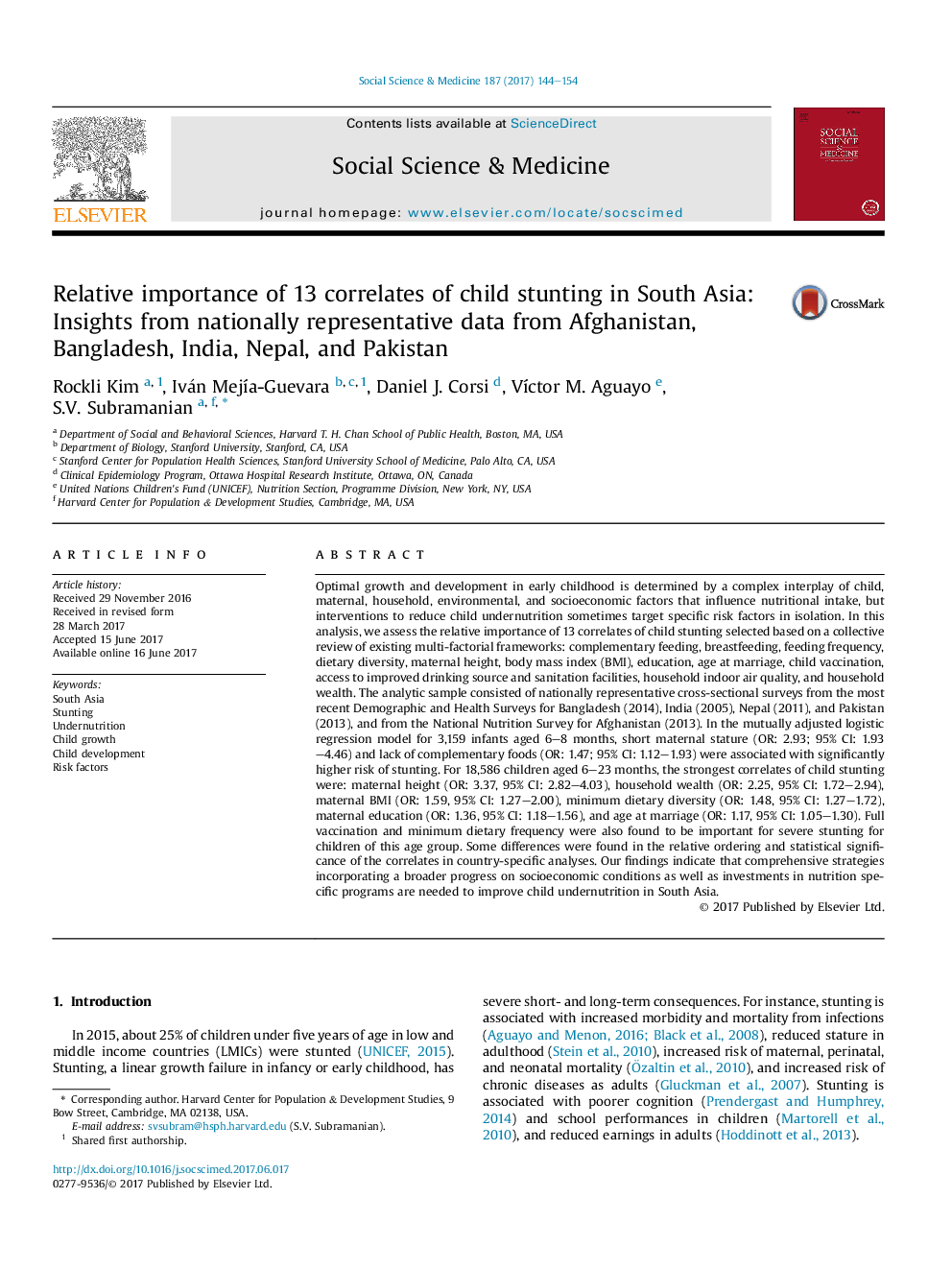| Article ID | Journal | Published Year | Pages | File Type |
|---|---|---|---|---|
| 5046471 | Social Science & Medicine | 2017 | 11 Pages |
â¢Risk factors for child undernutrition are often assessed in isolation.â¢We assessed the relative importance of 13 correlates of stunting in South Asia.â¢Socioeconomic conditions and child feeding practices were found to be most important.â¢The relative contribution of correlates for stunting differed by country and age group.â¢Interventions should comprehensively address multiple drivers of stunting in South Asia.
Optimal growth and development in early childhood is determined by a complex interplay of child, maternal, household, environmental, and socioeconomic factors that influence nutritional intake, but interventions to reduce child undernutrition sometimes target specific risk factors in isolation. In this analysis, we assess the relative importance of 13 correlates of child stunting selected based on a collective review of existing multi-factorial frameworks: complementary feeding, breastfeeding, feeding frequency, dietary diversity, maternal height, body mass index (BMI), education, age at marriage, child vaccination, access to improved drinking source and sanitation facilities, household indoor air quality, and household wealth. The analytic sample consisted of nationally representative cross-sectional surveys from the most recent Demographic and Health Surveys for Bangladesh (2014), India (2005), Nepal (2011), and Pakistan (2013), and from the National Nutrition Survey for Afghanistan (2013). In the mutually adjusted logistic regression model for 3,159 infants aged 6-8 months, short maternal stature (OR: 2.93; 95% CI: 1.93-4.46) and lack of complementary foods (OR: 1.47; 95% CI: 1.12-1.93) were associated with significantly higher risk of stunting. For 18,586 children aged 6-23 months, the strongest correlates of child stunting were: maternal height (OR: 3.37, 95% CI: 2.82-4.03), household wealth (OR: 2.25, 95% CI: 1.72-2.94), maternal BMI (OR: 1.59, 95% CI: 1.27-2.00), minimum dietary diversity (OR: 1.48, 95% CI: 1.27-1.72), maternal education (OR: 1.36, 95% CI: 1.18-1.56), and age at marriage (OR: 1.17, 95% CI: 1.05-1.30). Full vaccination and minimum dietary frequency were also found to be important for severe stunting for children of this age group. Some differences were found in the relative ordering and statistical significance of the correlates in country-specific analyses. Our findings indicate that comprehensive strategies incorporating a broader progress on socioeconomic conditions as well as investments in nutrition specific programs are needed to improve child undernutrition in South Asia.
